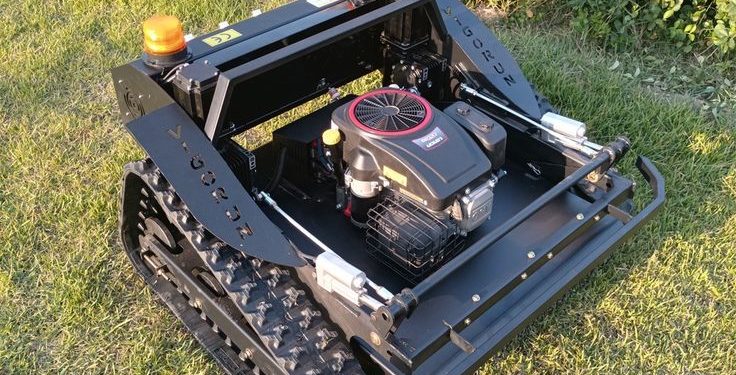The idea of an autonomous machine operating in your garden, particularly one with sharp blades, naturally raises questions about safety. For robot lawn mowers without perimeter wires, these concerns are particularly relevant as they navigate without a physical barrier. However, modern robot lawn mower without perimeter wire are engineered with a sophisticated array of safety features and intelligent technologies designed to ensure the well-being of people, pets, and property. Understanding these safeguards is crucial for homeowners considering this advanced lawn care solution.
The Foundation of Wire-Free Safety: Advanced Navigation
Unlike older models that might rely solely on bump sensors, wire-free robot mowers utilize highly advanced navigation systems that inherently contribute to their safety.
- RTK-GPS Precision: Many wire-free mowers use RTK-GPS for centimeter-level accuracy. This means the mower knows its precise location on your lawn at all times. This precision allows it to adhere strictly to virtual boundaries and “no-go” zones, preventing it from straying into unwanted or unsafe areas like driveways, roads, or delicate garden beds.
- Vision-Based Navigation & AI: Mowers equipped with cameras and Artificial Intelligence (AI) can “see” and interpret their environment. The AI is trained to recognize various objects, including people, pets, and common garden items. This allows the mower to proactively detect and avoid obstacles before making contact.
- Multi-Sensor Fusion: Combining data from multiple sensors (ultrasonic, radar, cameras, lift, tilt, bumper sensors) provides a comprehensive understanding of the surroundings, creating a robust safety net.
Key Safety Features
Beyond their advanced navigation, wire-free robot mowers incorporate several specific safety mechanisms:
1. Automatic Blade Stop
- Lift and Tilt Sensors: All robot mowers are equipped with sensors that immediately stop the blades if the mower is lifted or tilted significantly. This prevents accidental contact with the rotating blades if the mower is picked up or tips over.
- Collision Sensors: While advanced navigation aims to prevent collisions, if a physical impact does occur, bumper or pressure sensors will trigger an immediate blade stop and redirection, minimizing potential damage or injury.
2. Intelligent Obstacle Avoidance
- Proactive Detection: As mentioned, vision-based and radar/ultrasonic sensors allow the mower to detect obstacles from a distance. This means it can slow down, change direction, or stop completely before hitting a child, pet, or valuable garden item.
- Object Recognition: The ability of AI to distinguish between a blade of grass and a pet means the mower can react appropriately, prioritizing safety.
3. Safety Around Children and Pets
- Low Blade Power: Robot mowers use small, lightweight, razor-sharp blades that often retract or pivot upon impact. While still dangerous if direct contact occurs, the design is less likely to cause severe injury compared to the heavy, high-inertia blades of traditional m mowers.
- Scheduled Operation: Many homeowners schedule their robot mower to operate when children and pets are not in the yard (e.g., at night or during school/work hours), adding an extra layer of safety.
- Quiet Operation: The low noise level of robot mowers is also a safety benefit, as it’s less likely to startle or frighten pets, reducing unpredictable behavior.
4. Anti-Theft and Security Measures
While not directly a physical safety feature, anti-theft measures protect your investment and prevent unauthorized use.
- PIN Codes: Mowers often require a PIN code to operate, preventing children or unauthorized individuals from starting them.
- GPS Tracking: Many wire-free models include GPS tracking, allowing you to locate the mower if it’s moved outside its designated area or stolen. Some can even be remotely disabled.
- Alarms: Audible alarms are often triggered if the mower is lifted or moved without the correct PIN.
User Responsibility and Limitations
While highly safe, it’s crucial for homeowners to understand their role in maintaining safety:
- Lawn Preparation: Always clear the lawn of small, loose objects (toys, hoses, large sticks) before a scheduled mow. While obstacle avoidance is good, it’s not foolproof for every tiny item.
- Supervision (Especially Initially): During the first few mows, it’s wise to supervise the mower to ensure it navigates your specific lawn safely and effectively.
- Proper Installation: Ensure the charging station and RTK base station (if applicable) are installed correctly and securely according to manufacturer guidelines.
- Blade Maintenance: Regularly inspect and replace dull or damaged blades, as sharp blades cut more efficiently and safely.
Conclusion
Wire-free robot lawn mowers are designed with multiple layers of sophisticated safety features, from precise RTK-GPS navigation and AI-powered obstacle avoidance to immediate blade stops and robust anti-theft systems. While no machine is entirely risk-free, these intelligent devices offer a significantly safer alternative to manual mowing, particularly when used responsibly and in conjunction with proper lawn preparation. For peace of mind and a beautifully maintained lawn, wire-free robot mowers are a secure choice.






